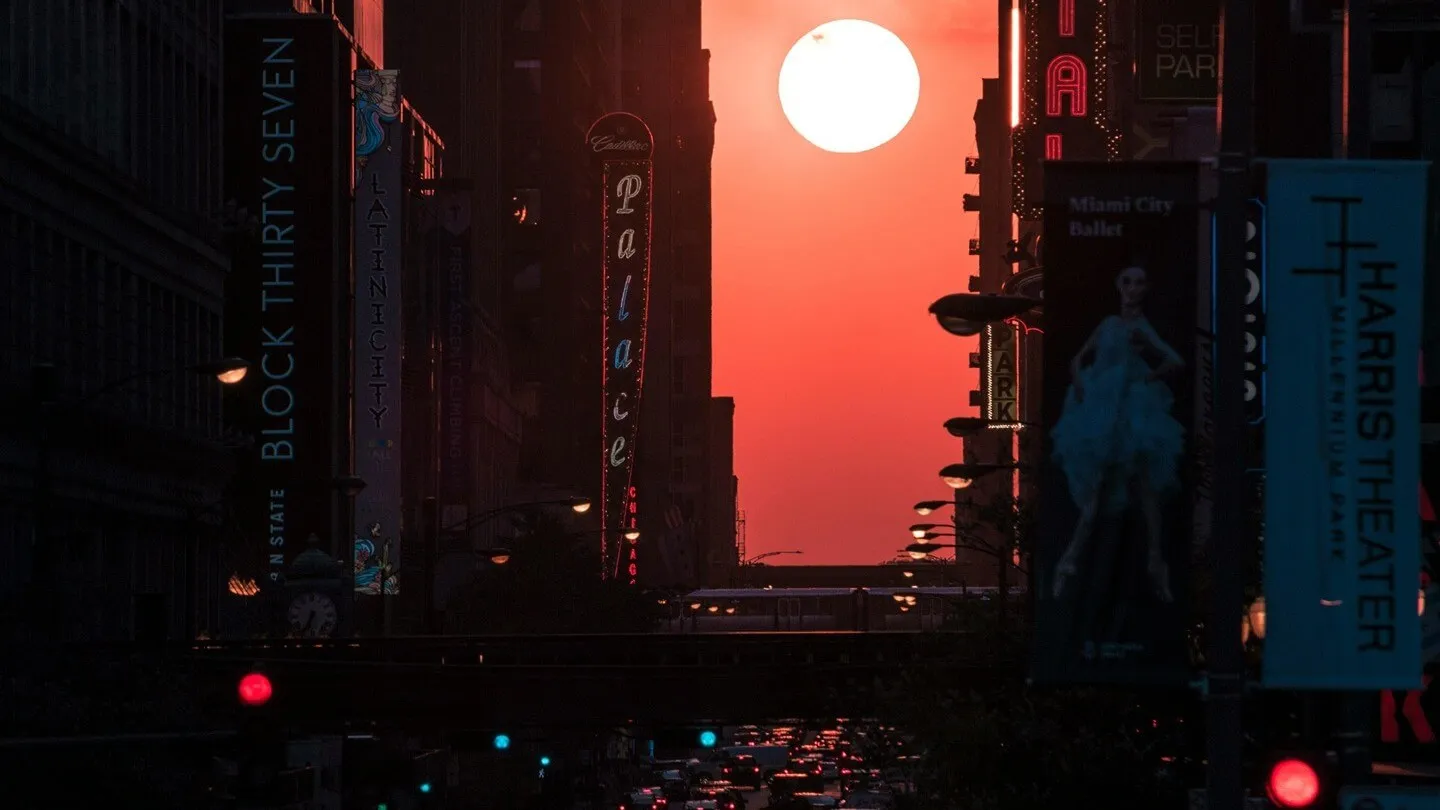In the dog days of summer, the blacktop is sizzling, fans are set to high, and cooling centers are open. Research has found cities are often warmer than more rural communities because of the "heat island effect." That's when the built environment exacerbates summer’s hottest days—in fact, the U.S. Environmental Protection Agency notes that, with fewer plants and lots of manmade structures and materials, cities can be several degrees hotter than their surrounding areas.
But these effects are not confined to the largest cities. As the climate continues to warm, people living in small and medium sized cities and even towns are increasingly recognizing the heat island effect in their communities. University of Vermont (UVM) researcher Elizabeth Doran says community planners and public works officials have an opportunity to come to the table and do a lot to reduce temperatures.
Together with colleagues from UVM and the Georgia Institute of Technology, Doran, a professor in the College of Engineering and Mathematical Sciences, authored a 2025 report that digs into some of the solutions.
What aspects of infrastructure related heat islands are you studying?
I’ve been looking at the drivers of heat islands in small places and how that affects heat exposure, energy consumption, and health outcomes so we can devise better building strategies for communities of all sizes. Climate writ large is warming, and we know the built environment exacerbates extreme heat events and can make the local climate much hotter than if you’re, say, standing in the middle of a forest. Tall buildings and street canyons change heat dynamics, and the materials that we use in built infrastructure also contribute to excessive warming in urban climates: asphalt and concrete pavements and buildings, even glass infrastructure, can concentrate and store heat energy and make extreme heat worse. Those relatively high temperatures can also persist overnight, so you don’t get a break.
Researchers have been developing alternative materials and ways of building to help mitigate the problem; the question becomes, are those solutions ready for the real world?
What about smaller communities?
We can easily count the number of big cities in the United States—about 50—but we have thousands of small cities all across the country where millions of people live and where there has been a lot less systematic study. But the same building materials are used in both large and small communities. So we’re studying the extent to which a city’s size and shape affect heat, versus the materials alone. We’re specifically focusing on pavements because even in smaller cities, my past work has shown that impervious surface cover is the primary driver of excess heating.
The way we have collectively been addressing urban heat islands up until now is to say, ‘well, big cities have a heat island problem, so those big cities should do something about that.’ And yes, that’s true, but while big cities typically have more resources than small communities, communities of all sizes may be experiencing some of the same infrastructure-driven extreme heat effects.

What can small communities do to address heat islands?
Municipal planners and public works directors in small communities sit at key points in the decision-making process to influence material selection and infrastructure design. We surveyed decision-makers from Maine to Florida, and our report specifically reinforces the finding that while these decision-makers may be aware of materials and designs that have been identified as good solutions to mitigate heat, they often are not specifying those solutions for heat. In fact, we found that heat considerations are often not currently part of most municipal officials’ decision-making process. But they are considering criteria like stormwater impact, and stormwater was not always part of decision making for infrastructure, either. It is now, and we are on that same journey for heat-mitigating infrastructure materials. For example, pervious or porous pavement can be a stormwater solution, but these materials can also help with extreme heat.
Can you tell me more about these new infrastructure materials?
One material we found to be of high interest in the research community and which we detail in our report was the porous or permeable concretes I mentioned above. In addition to their role in managing stormwater through increased infiltration to groundwater, these materials allow for increased evapotranspiration which can cool the urban climate. Another material we were interested in includes advanced concretes that are typically used in bridge decking. Manufacturers use special fibers to maximize the bridge’s load-carrying capacity while limiting how much the bridge weighs. These materials, being light, strong and flexible, might therefore make good alternatives to traditional poured concrete in sidewalk applications, as an example, because they introduce less material over all, and less mass to retain heat, into the urban fabric.
Where is this work applicable?
One of the main audiences for our report is public works managers. We found that transportation planners and practitioners, who’ve been left out of this conversation up until now, have an opportunity to take a leadership role in addressing climate change and mitigating extreme heat in their communities. There’s a real partnership opportunity between researchers, planners and public works professionals who are on the front lines of managing and maintaining infrastructure.
We see potential in every community across the state. For example, the City of Winooski has the most impervious surface of any town or city in Vermont, and based on past mapping, the highest urban heat signals in the state as well where there are high-traffic transportation corridors and centers of human activity. But we see these patterns repeated elsewhere as well with town centers that have urban canyons along their main street with traffic, shops and lots of human activity. Alternative materials may not be the best solution everywhere, however; sometimes a combined approach is best. So our report also looked at other strategies, like planting trees, and that’s another important item on the menu of things that can help mitigate urban heat and provide cooling shade for pedestrians.
What types of infrastructure surfaces are candidates for heat-mitigating upgrades?
We focused on pedestrian infrastructure because it doesn’t have the same structural design requirements that other types of transportation infrastructure have, and it can be a great place to experiment with novel materials and designs.
Looking ahead, parking lots, roads, and other components of transportation infrastructure experience regular turnover, especially here in Vermont. I'm always interested in a holistic approach, and across all of these types of surfaces, I see opportunities for planners to choose infrastructure materials that will have a real impact on climate mitigation in their communities.
The 2025 Vermont Heat-Health Survey seeks to better understand how people in Vermont perceive and prepare for extreme heat and how that has changed over time. The information that you provide through a brief anonymous online survey is expected to help policy makers and others reduce the risk of extreme heat for all Vermonters.
